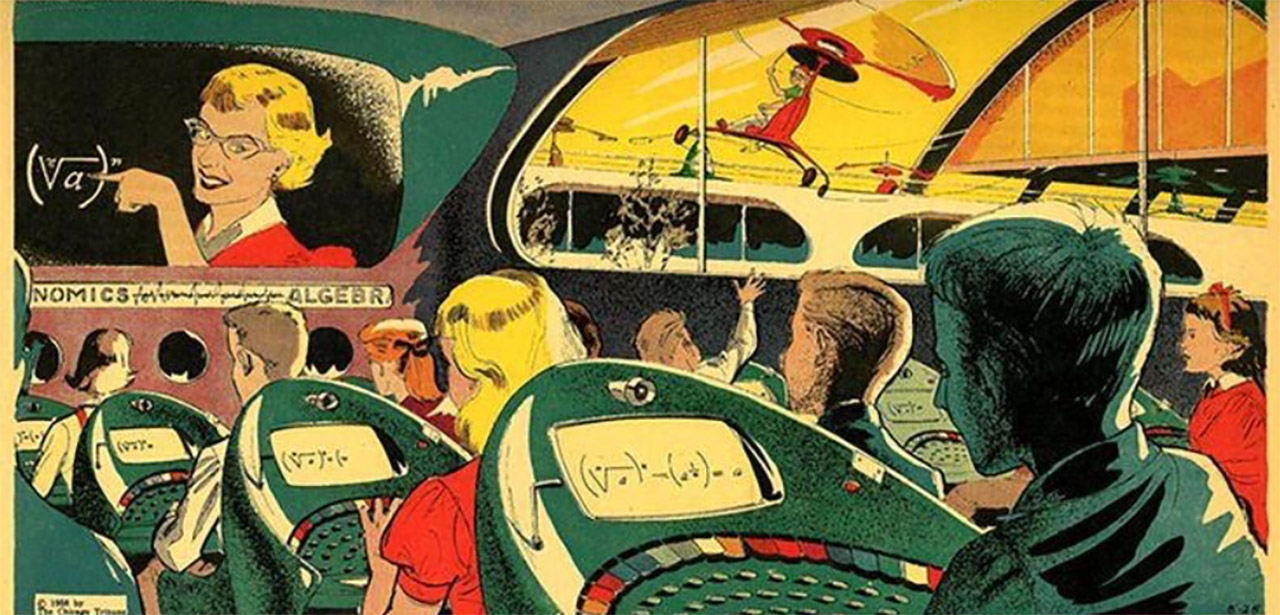
From the Editor
I believe it has something to do with context.
Education’s innovations are coming fast and furious now, and many believe the days of readin’ and writin’ and rithmatic are long gone, as are the days when teachers were the arbiters of what makes good learning.
And that is where the context comes in.
In 1973, I attended Wiley Junior High School as a member of Mr. Wilson’s 8th grade math class. One of my classmates, Greg Ryder, I believe, brought in a “handheld” calculator. Its functions included addition, subtraction, multiplication, and division. It weighed in at around four pounds and could not even do square roots. But it was the height of EdTech at that time. To do more, you would need a much bigger machine. As I recall, we all wanted one.
The first is obvious. In 1973, we had 20 very eager, very excited 13-year-olds that were there, ostensibly, to learn. With all the differences in the world then and now, a 13-year-old remains pretty much the same. Granted, there are a lot more distractions today with COVID and social media, but we had a lot to deal with back then as well. Back in grade school, we were still practicing “Duck and Cover.” Think times are hard now? Kids in my day were routinely preparing for the end of the world. “All right kids, when you see the bright flash, everyone quickly get under your desk, put your hands behind your head, and pull your head to your knees.”
The second commonality may not be as obvious, but perhaps it should be. Back in 1973, just like today, learning relied on the skills of a teacher.
Technology has changed. Teaching methods have evolved, and teachers have become more skilled and arguably even more important.
As you read the collection of stories in this first issue of (ET) Magazine, you will notice those same two commonalities being repeated. Technology has become infinitely more exciting than it was back in my day, and the role of the teacher has grown right along with it.
One of the most exciting technologies expanding education’s possibilities is Artificial Intelligence. And unlike the science fiction version, AI for education promises to help answer the challenges in education (and therefore society). In his article “With AI, There is No Limit to What We Can Accomplish,” author Sal Gerardo explains how AI is being created to work directly with and for teachers, giving learners what they need to reach their highest potential. And do not worry, this AI promises to be Three Laws Safe.
Another extremely exciting technology is growing right before our eyes, thanks to our author Steve Grubbs and others. His team is building the education metaverse, and his article “The Transformation of the Classroom: Crazy Today, Obvious Tomorrow,” will let you know how (and why). Think you know where education is headed? It may surprise you. And even if you do, we may be getting there faster than you think.
As we progress along a path of incredible technology and enhanced opportunity for learners across the world, it is important we remember learners are children, and their identity protection is vital. The laws we have are well-meaning, but many lack teeth, and companies are forever figuring out ways to circumvent the intent of those laws. In this issue, Author Claire Quinn, whose company PRIVO is widely recognized as the world’s top expert in child data protection, shares the facts in her article “The Real State of Children’s Privacy.” According to Quinn, there is a long way to go before the situation is as it should be. Perhaps, if the penalties were criminal instead of civil…
Enjoy this first edition of (ET) Magazine. The board wanted to publish a different kind of education magazine. Instead of paid writers and short formulaic articles, everything is written in depth by some of the world’s top experts; and the magazine has a decidedly forward-thinking perspective. We believe technology should enhance education for everyone, to provide real equity for learners everywhere. And we are betting the farm that today’s educators are up for the task.
All My Best,
Charles